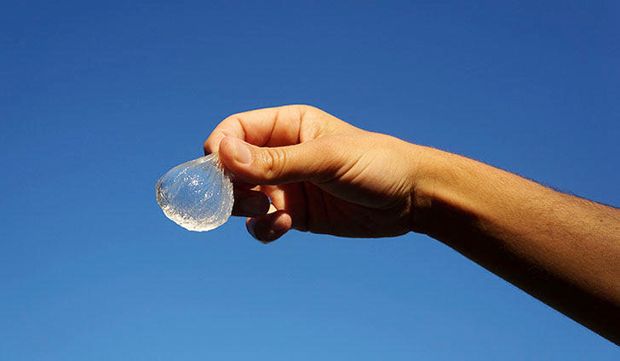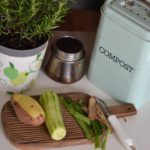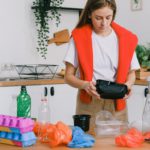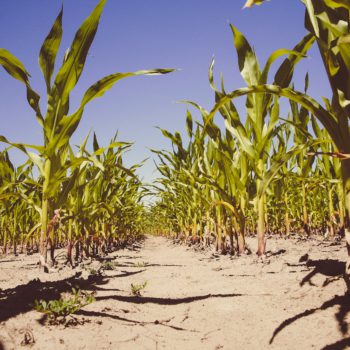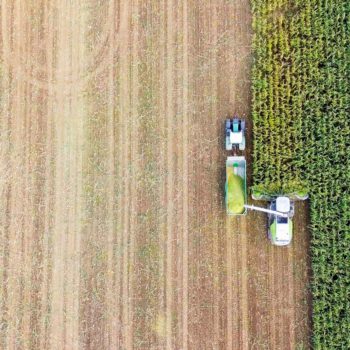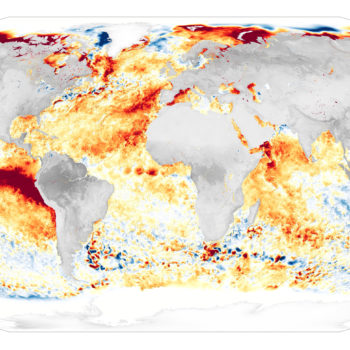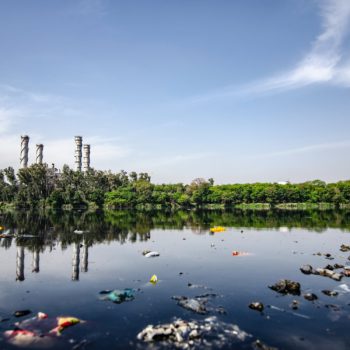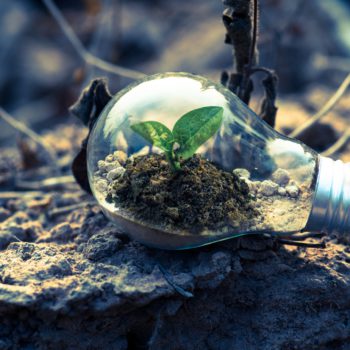|
|
Plastic water bottles have become a huge environmental problem, filling up landfills and polluting our oceans. But there’s a new and exciting solution in town! Skipping Rocks Lab has created an amazing edible water bottle that can change how we drink water and help the planet.
In this article, we’ll show you how to make your edible water bottle using a cool process called spherification. Learn about this eco-friendly way to enjoy your drinks while reducing waste!
The Ooho Water Bottle
The incredible Ooho water bottle is like nothing you’ve seen before! It’s made from a special ingredient called sodium alginate from brown algae, an underwater plant. Imagine making it as if you were cooking a unique dish.
Here’s how it works:
First, mix sodium alginate with water, like you might mix ingredients for a recipe. Then, you pour this mixture into a bowl and pop it in the freezer, where it gets all icy and solid, like making ice cubes.
Now, the fun part begins! You take the frozen sodium alginate and water mixture out of the freezer and have a bowl of liquid water ready. You drop the frozen stuff into the liquid water, and something magical happens – spherification.
It’s like turning water into a jelly-like sphere, which makes the edible water bottle so amazing! The water gets trapped inside this jelly-like sphere, and you can hold it like a bottle.
Watch this CNBC YouTube video on how Ooho, water biodegradable water bottle works.
Crafting Your Edible Water Bottle with Spherification
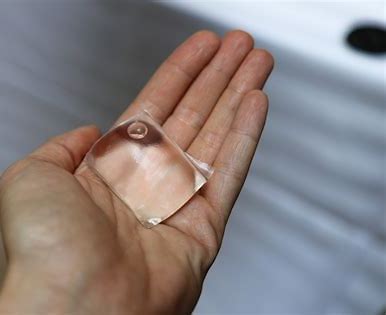
Creating your very own edible water bottle using the fascinating spherification process is an adventure. Here’s a step-by-step guide to make it happen:
Step 1: Mix Sodium Alginate and Water
Combine 500ml of water with 2g of sodium alginate in a bowl. Stir the mixture thoroughly until the sodium alginate is completely dissolved. It’s like mixing ingredients for a special recipe.
Step 2: Freeze the Mixture
Now, pour this sodium alginate and water blend into a mold or a spherical ice cube tray. Place it carefully in the freezer and let it sit until it becomes completely frozen. Think of it as freezing an ice cube but with a twist!
Step 3: Prepare the Calcium Chloride Solution
While your sodium alginate mixture is freezing, it’s time to prepare the next part. In a separate container, mix 1 liter of water with 5g of calcium chloride. This will be the special liquid that helps create the magic.
Step 4: Dive into Spherification
Once your sodium alginate mixture has turned into icy goodness, take it out of the freezer. Now, here’s where the enchantment happens. Drop your frozen sodium alginate and water creation into the liquid calcium chloride solution. It’s like turning a key in a lock.
Step 5: Let It Rest
Allow your sodium alginate mixture to sit in the calcium chloride solution for a few minutes. During this time, something extraordinary occurs – creating your edible water bottle.
Step 6: Rinse and Rejoice
Finally, take your spherified water bottle out of the calcium chloride solution. Please give it a gentle rinse with water to remove any extra chemicals. Now, you have an edible water bottle ready for a refreshing drink!
This impressive process combines science and creativity, offering a unique way to enjoy your beverages while reducing plastic waste. It’s like performing a kitchen science experiment that’s not only fun but also eco-friendly.
Unlocking the Advantages of Edible Water Bottles
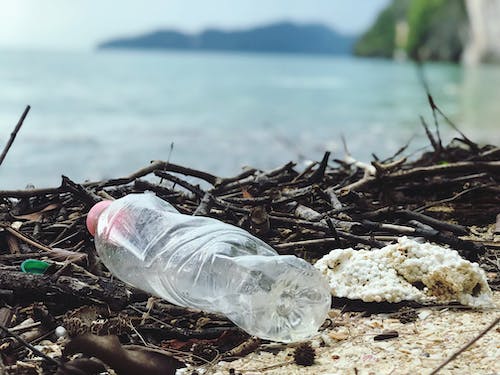
The edible water bottle isn’t just a novelty; it’s a game-changer in the world of hydration and sustainability, offering a host of compelling benefits:
Reducing Plastic Waste
Plastic waste is a huge problem worldwide. It’s everywhere, from the tallest mountains to the deepest oceans. This is bad for the planet and harmful to people, animals, and nature. Especially sea animals are suffering because of it.
According to Statista, the amount of plastic being made has doubled since 2000, and in 2021, it reached almost 400 million metric tons. What’s even worse, plastic sticks around for a very long time. While we use plastic things for about 10 years on average, they can take up to 500 years to break down and disappear, depending on what they’re made of and how they’re thrown away.
Embracing edible water bottles means waving goodbye to single-use plastic bottles, a significant contributor to environmental pollution. Each time you sip from an edible water bottle, you take a small but impactful step toward reducing the plastic waste that litters our planet.
Biodegradability
Unlike conventional plastics that persist in the environment for centuries, edible water bottle membranes are crafted from natural ingredients, ensuring biodegradability. These bottles break down harmlessly when discarded, returning to the earth and leaving no enduring trace of pollution behind. This aligns with global efforts to curb plastic pollution and promote eco-conscious choices.
Hydration at Its Finest
Beyond its eco-friendliness, the edible water bottle serves its primary purpose with excellence – keeping you hydrated. The edible membrane is a sustainable choice and a source of pure refreshment, quenching your thirst while replenishing your body’s vital fluids. Staying hydrated has myriad health benefits, from improved digestion to better skin health.
Collapsible Convenience
Practicality meets eco-responsibility in the design of edible water bottles. Their collapsible nature makes it easy to carry, store, and share. Whether on a hiking adventure, attending a music festival, or simply enjoying a day at the beach, the convenience of collapsible hydration ensures you stay refreshed without the bulk of traditional plastic bottles.
The brainchild of Rodrigo García González and Pierre Paslier, the Ooho water bottle stands at the forefront of this eco-revolution. Their visionary creation has the potential to reshape the way we consume water, tackling the pressing issue of water bottle pollution head-on and providing a sustainable alternative that’s as friendly to our bodies as it is to our planet.
In a world increasingly aware of the need for change, the edible water bottle offers a refreshing sip of innovation, sustainability, and a brighter future.
Frequently Asked Questions
Making an edible water bottle involves creating a container that can hold and deliver water, which is safe to consume and can be consumed along with the container itself.
Some benefits of using an edible water bottle include reducing plastic waste, promoting sustainable packaging, and providing a convenient and environmentally-friendly alternative to traditional plastic bottles.
The edible water bottle is made using a culinary technique that encapsulates water inside a sphere made of algae or seaweed. This sphere is edible and can be consumed along with the water inside.
The edible water bottle is biodegradable as it is made from natural materials such as algae or seaweed, which can break down naturally over time.
To consume the edible water bottle, you bite into the sphere and sip the water inside. It provides a unique and sustainable way to hydrate.
The edible water bottle is primarily designed for water packaging, but it may have potential applications for other liquid beverages as well.
The edible water bottle has a limited shelf life, typically around six weeks, as the natural materials used in its production can degrade over time.
By using edible water bottles, the environmental impact of plastic water bottles can be reduced significantly, as billions of plastic bottles are produced and discarded each year.
The concept of the edible water bottle was invented by Pierre Paslier and Guillaume Couche, two designers from the Imperial College London, as part of a startup initiative.
While the concept of the edible water bottle is still relatively new, some companies have started exploring its production on a small scale. One example is a Spanish restaurant called El Bulli, which has experimented with creating edible water bubbles.
In Conclusion: Sipping Toward a Greener Future
Crafting an edible water bottle through spherification emerges as a beacon of hope in a world grappling with plastic waste‘s ecological toll. Utilizing a natural and biodegradable membrane, this inventive process presents a solution to the grave environmental repercussions of traditional plastic water bottles. It’s an invitation to hydrate without guilt, to enjoy the pure refreshment of water without the burden of plastic pollution.
At the forefront of this eco-revolution stands the Ooho water bottle, a remarkable invention that embodies sustainability and innovation. With its potential to revolutionize how we consume water, this humble yet extraordinary creation possesses the power to heal our planet’s scars.
As we raise our edible water bottles to our lips, we also raise our hopes for a healthier, more vibrant world. With every sip, we step closer to a greener, more sustainable future that’s as refreshing as it is responsible.
